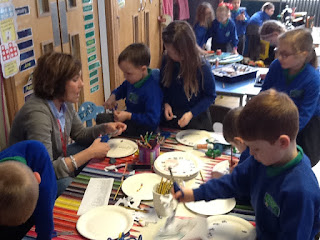It is time to see 6 and 7 year-old students in action. First, they place the chess pieces on a magnetic board.
Then, the teacher poses a chess exercise in the magnetic board.
The teacher begins to ask, "what if I move the bishop to f 4," and students respond by saying if itis a good move or not because we put other pieces in danger.
Finally they propose the movements that they believe are most appropriate for the situation posed by the teacher on board.
Finally they practice the play on boards in pairs.
In the meanwhile, the teacher showed me some games and applications she uses on the computer to motivate children.
I like this one very much, just for fun!. You choose the level...
and the appearence of the chess pieces
I also liked FRITZ & CZESTAW very much.
This game include funny exercises to practice the different movements of each piece.









































